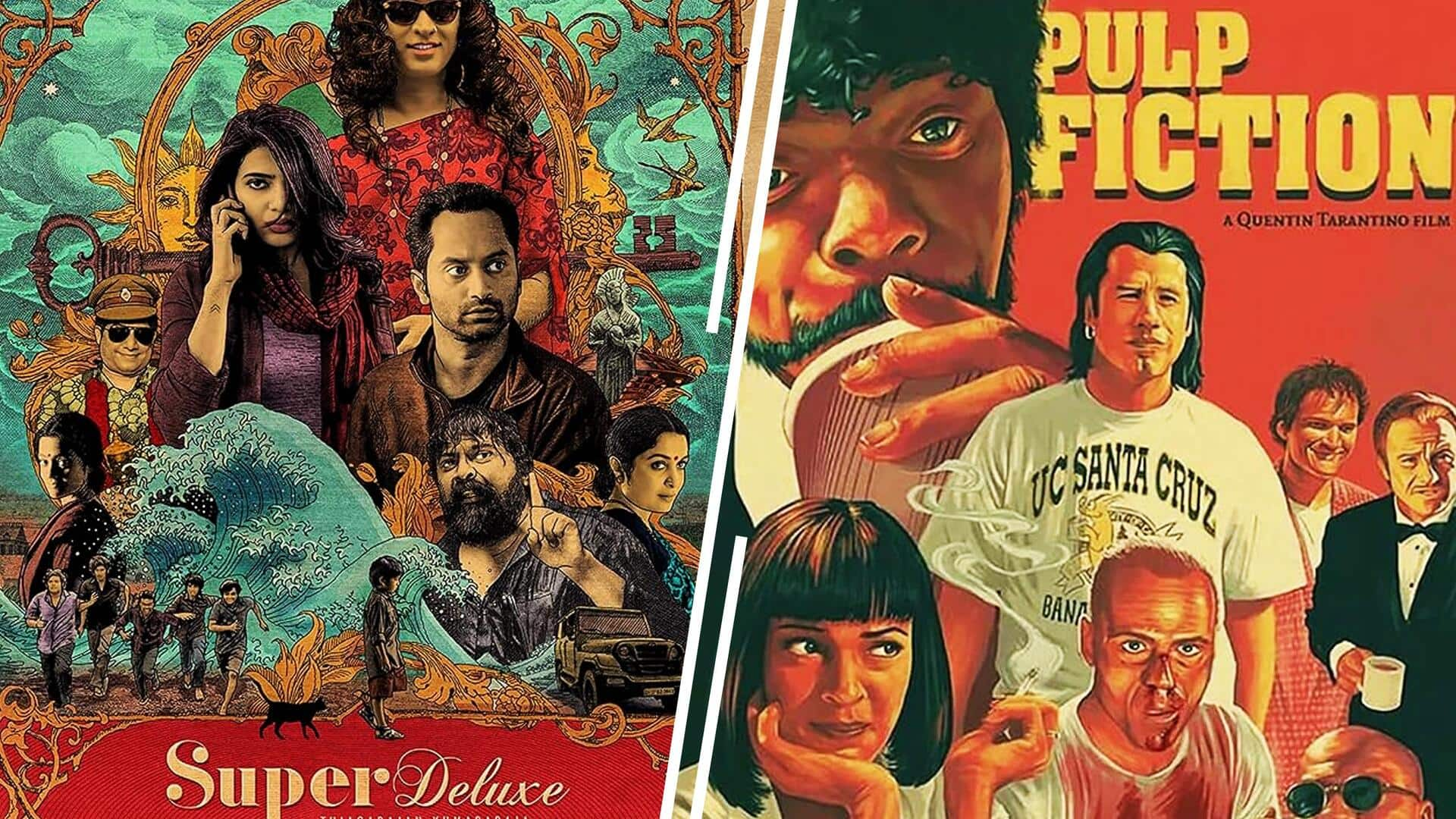
Explainer: Breaking down system of hyperlink cinema—process, examples
What's the story
There are various kinds of films. Some have a straightforward narrative that runs on direct cause and effect, while some tell their story through flashbacks/imaginary sequences. Another interesting type is hyperlink cinema, where multiple plots seem to exist independently but are all tied by the same unifying theme. Such films usually have multiple actors and unlike anthologies, aren't demarcated separately.
#1
Understand it better through this definition
According to Filmmaking Lifestyle, "Hyperlink cinema is a narrative technique used in films where multiple storylines, often seemingly unrelated, are interwoven to create a complex and interconnected narrative." "This style allows for a broad exploration of themes and characters, as seen in films like Babel and Crash." Quentin Tarantino, Satyajit Ray, Steven Soderbergh, and Paul Thomas Anderson are celebrated for contributing to hyperlink cinema.
#2
Origin and popularization of the term
The term was coined by author and journalist Alissa Quart, who used it in her review of Happy Endings (2005) while writing for the film journal Film Comment. Subsequently, acclaimed film critic Roger Ebert popularized it when he reviewed the 2005 release Syriana. Kanchenjungha (1962), Amarcord (1973), and Titash Ekti Nadir Naam (1973) are considered the earliest examples of films with interrelated plot lines.
#3
Examples of hyperlink films from across the globe
Examples of films that fall in this category are Pulp Fiction, Super Deluxe, Traffic, Sin City, Nine Lives, Mumbaikar, Masaan, The Big Short, Thirteen Conversations About One Thing, Everything Everywhere All at Once, and The Edge of Heaven. Look Both Ways, The Air I Breathe, Cape of Good Hope, Love Actually, Contagion, Ganadevata, and Dazed and Confused are similar examples.
#4
This is what Tarantino said about 'Pulp Fiction's narrative technique
Renowned director Tarantino once said, "A story is something that constantly unfolds—I'm not talking about a quick left turn, or a quick right turn, or a big surprise— I'm talking about it unfolds...It's not that I'm on this big crusade against linear storytelling, but the thing is it's not the only game in town." His experimental approach worked and how!